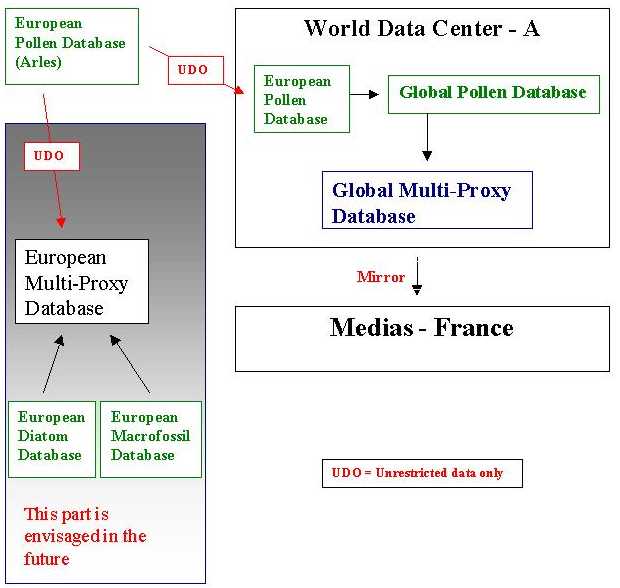
It has been recommended that, especially in the case of bigger projects based on the EPD, users are encouraged to contact the EPD manager to discuss any scientific and technical problems crucial to the project. In the case that the EPD does not receive financial support from international funding bodies, users will be asked to include within their project budget some funds to cover EPD upkeep.
Development of multi-proxy databases
The topic of multi-proxy databases was discussed from two points of view:

From the EPD point of view (point 1) it has long been recognized that plant macrofossils and diatoms are frequently analysed from the same cores as pollen and so there is a loss of ecological information if these aspects are separated out into different databases.
It was noted, however, that to combine all this multi-proxy data from one core into a single database poses numerous practical difficulties including the need for many specialist areas of expertise. For this reason it was felt that each specialist database should remain separate but have the facility to be linked with others.
For the broader discussion on multi-proxy databases (point 2) the AB was joined by Dr. Francoise Gasse representing PAGES-PEPIII, Dr Steve Juggins representing the diatom database EDDI, Jean-Luc Boichard and Eliane Cubero-Castan representatives from Medias-France and Antti Huusko representing the EPMP database.
It was envisaged that pollen data assembled in individual multi-proxy project databases (eg PALICLAS) should be passed to the EPD for quality control before being entered in the GPD, rather than being passed directly to the GPD. The AB affirmed that it would be happy to participate in the development of multi-proxy databases, noting that such development is dependent on the formation of other project databases, such as macrofossil and fossil diatom databases. EPD data that are in the Global Pollen Database are becoming incorporated in the WDC-A’s developing Global Multi-Proxy Database, but the latter is not yet accessible via the Web.